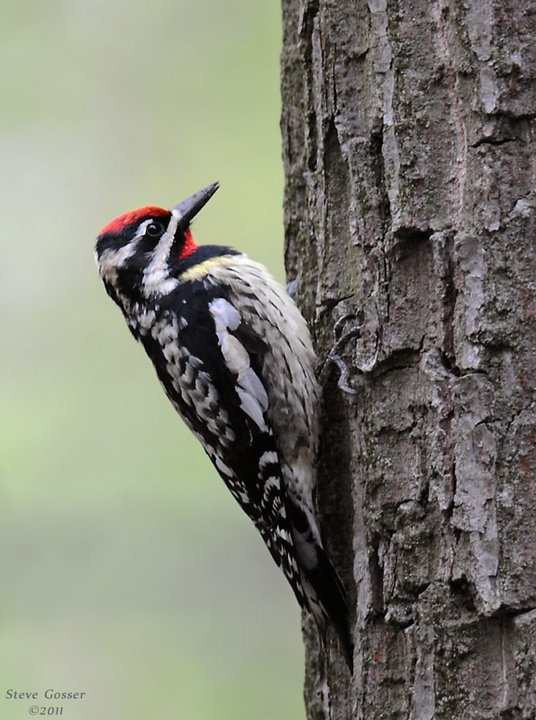
Yellow-bellied sapsuckers (Sphyrapicus varius) leave behind evidence of their visit when they pass through Pittsburgh on migration. In their search for food sapsuckers drill horizontal rows of holes on tree trunks and large branches, then lick the leaking sap and eat the insects attracted to it.
The trees cope as best they can with this unusual damage. Shagbark hickories (Carya ovata) grow puckered bark around the holes.
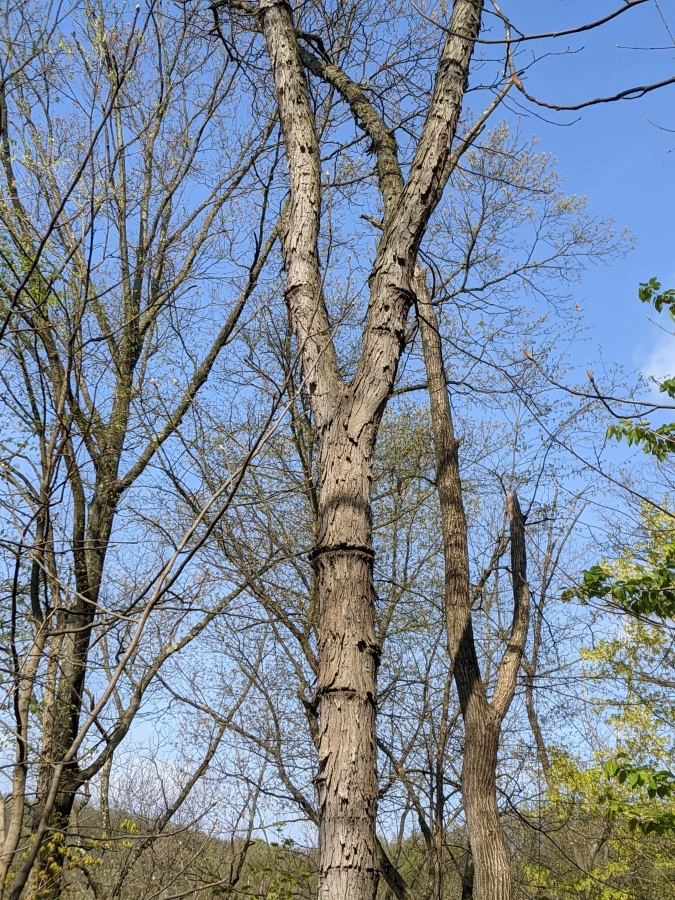
Tuliptrees (Liriodendron) display clean holes.
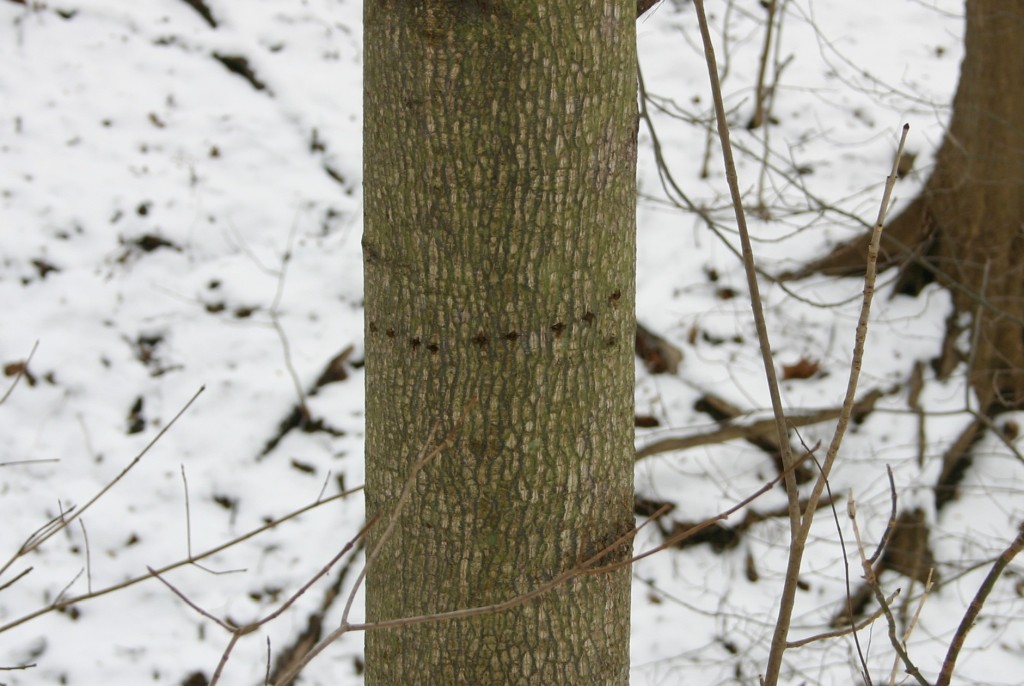
This spring for the first time I’ve noticed trees bleeding orange sap after sapsuckers visit.
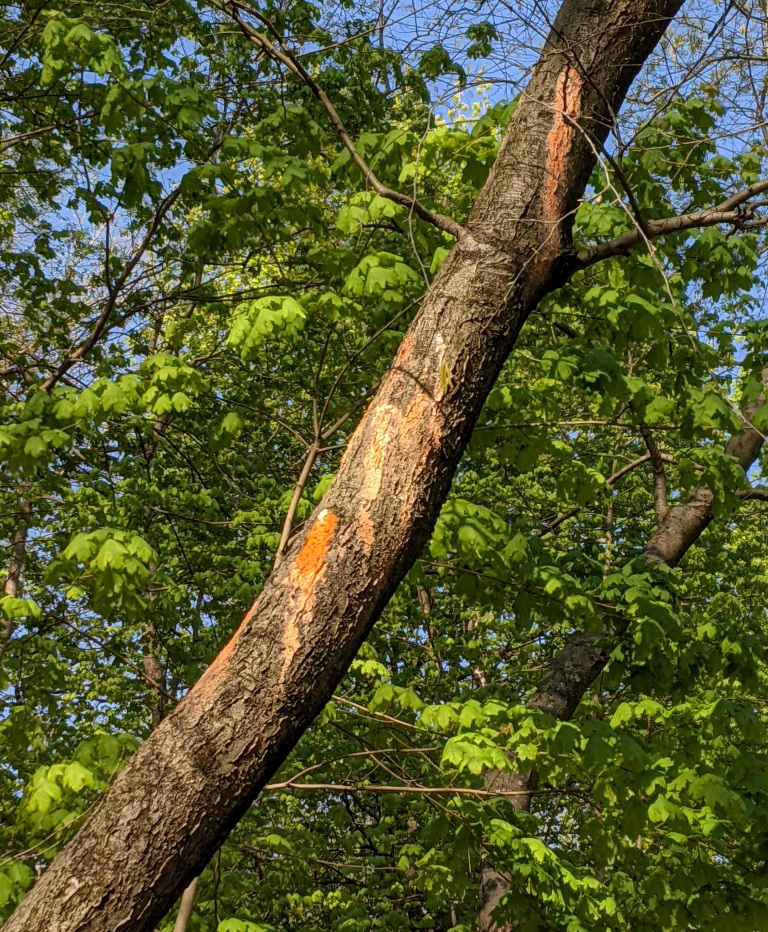
My best guess is that these are sweet birch (Betula lenta), also called black birch or cherry birch. Nothing says their sap turns orange, but a few facts tip the species scales for me.
- New sweet birch leaves resemble cherry leaves. (I saw this yesterday)
- The bark of older trees is dark and looks like plates.
- Sap rises in sweet birch trees later and faster than it does in maples. (true)
- We tap sweet birch trees and collect the sap to make birch beer. (Why is birch beer red?)
- Deer don’t eat sweet birches so they’re more common now in Pennsylvania’s forests.
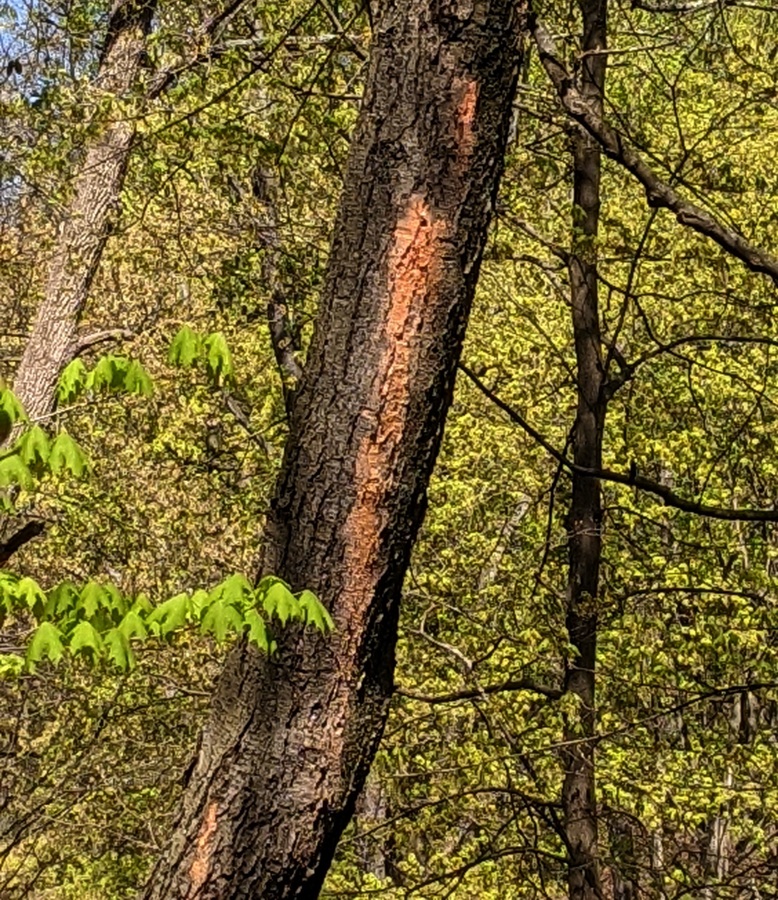
Have you seen any trees that bleed orange sap?
Do you happen to know if these are sweet birches?
(sapsucker photo by Steve Gosser, tree photos by Kate St. John)
UPDATE! Horticulturalist Sara Showers points out: “This looks like a phenomenon called “slime flux,” when leaking sap – a sugary food source! – is colonized by yeasts and other fungi. Here’s an article from Cornell about the phenomenon: https://blog.mycology.cornell.edu/2010/04/30/tree-slime-stump-flux-and-microbial-consortia/
Meanwhile I’m becoming more convinced that the tree species is sweet birch based on its leaves and bark and abundant sap. No, the sap is not orange.
My wife and I were speculating on what caused those rings around the shagbark hickory trees. Now we know!
This looks like a phenomenon called “slime flux,” when leaking sap – a sugary food source! – is colonized by yeasts and other fungi. Here’s an article from Cornell about the phenomenon: https://blog.mycology.cornell.edu/2010/04/30/tree-slime-stump-flux-and-microbial-consortia/